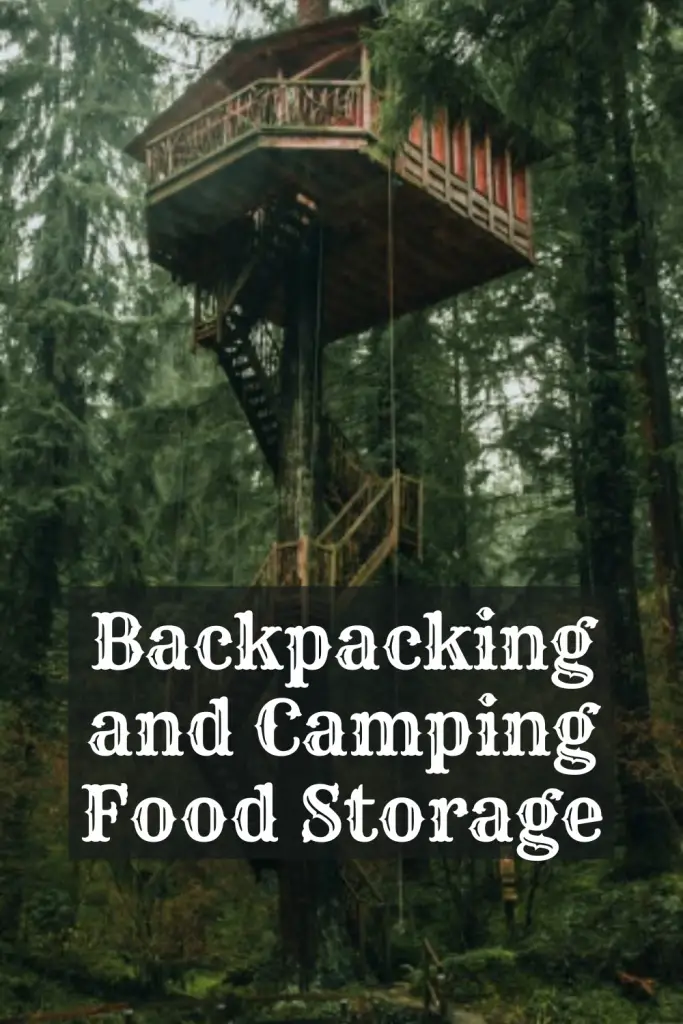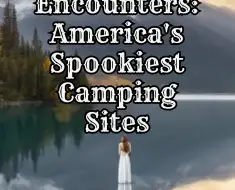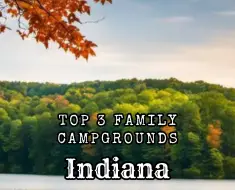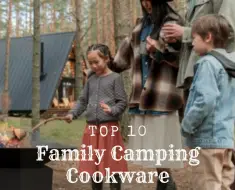
When you are in nature it is a fact that you will encounter all kinds of animals. They will also be happy to partake in the bountiful human foods that you have brought with you. Trust me they can get into your food wherever you camp. It isn’t just the small critters like mice that you need to worry about. Bears will go right into a tent or bag to get food. That is why it is so important to understand backpacking and camping food storage.
Part of exploring with a Leave No Trace ethic is to not change the natural world. Therefore, it is our responsibility as campers to prevent inadvertently feeding the animals. This could impact their ability to hunt. Worse it could make them comfortable around humans leading to injury or death of the human they interact with or of the animal itself.
Learn more about Leave No Trace Ethics now!
The tips that are provided below are meant to guide you in handling your food safely. They should, in most instances, allow you to prevent accidentally causing a feeding frenzy around your camp by a curious bear. In any event, you should be prepared with this backpacking and camping food handling knowledge!
1. Know What you may Encounter and Plan
Backpacking and Camping is all about being outdoors and experiencing different things. Much like the scenery can change the critters that live in each of those areas change as well. Now smaller animals like squirrels and mice you will likely find nearly everywhere you go. However, if you are camping in the American Southwest it is unlikely that you will run across a bear. In the northern latitudes though you may come across a bear or two.

For backpacking and camping food storage it is important to understand the type of animals that you will run into first. This is because it will help you decide which methods of food storage you should take. So once you decide on that perfect camping trip location, reach out and do research. The Forest Service and Bureau of Land Management websites and local offices have a wealth of information on the wildlife. So reach out to them. Get their advice on the types of animals and food storage they recommend. I am all about doing as much research on your own as you can. However, local knowledge will trump most of what you find on the internet. This is because some animals have learned to overcome standard food storage techniques. A ranger can help you better understand the best methods in their location.
2. Clean up your Campsite

Whether you are in a campground or the backcountry it is critical to keep things clean. This is your first defense in backpacking and camping food storage. When you are done with a meal make sure that you have washed all your dishes thoroughly. When cooking doesn’t brush crumbs onto the ground. You also want to make sure that the cooking area is clean of droppings or splatters. Doing each of these things will insure that the level of smell stays low at your campsite.
It is also easy to forget that you have food stashed in your bags from a day of hiking. Even wrapped food can emit smells detectable by wildlife. So when you complete your bedtime review make sure to add a bag and pocket check into your routine. This will ensure that there are no random goodies left around for small critters like mice to get into.
Check out how to keep your campsite squeaky clean for more great tips!
3. Get the Right kind of Smelly

Just like keeping food picked up you want to try and prevent smells if possible. this is because if an animal can’t smell your food, it won’t get your food! Be diligent when cleaning your camp. Even if you can’t smell something doesn’t mean an animal can’t. As you are cleaning make sure to pick up and seal everything that had or could have a smell. Yes, even trash. I like to use Loksaks when possible for leftovers. Some other tips below can help with larger storage. We will get into those soon. Whichever you choose though make sure you have clean hands. You don’t want to smear bacon grease on the outside of your smell protection and lead the animals right to it!
Don’t forget yourself too. It is okay to smell like the great outdoors. Remember that artificial smells also attract wild animals. Larger animals may not smell dinner or your snack. However, they will smell your deodorant or shampoo. If it smells good and attractive to us it likely will to an animal as well. It is critical that if you do choose to use smelly toiletries that you also store them in a smell-proof bag when bed time rolls around.
4. Out of Sight, Out of Reach
It isn’t just the smell that can attract animals to your food. Some animals have figured out that certain shapes also reap a tasty reward. They can seek out similar containers. So if an animal understands a cooler shape it may be inquisitive and look through it. Even if there is no smell. They will still try to get in and look for food. Unfortunately, this is a learned skill from years of human interaction. Even if you are practicing good backpacking and camping food storage techniques, it doesn’t mean those before you did. So what are we to do? Well, the next few tips can help you out!
Keep it Separated

It is always best to keep food separated from your campsite. This is because there are animals that will still come into sites in search of food. Even if you are diligently securing your food and its smells you may still get a visitor. Keeping your food at a distance could ensure that you have time to react and protect yourself. Now, a squirrel may not do a lot of damage, but even a few seconds of warning can help with a bear. Better yet, the separation could ensure the bear never enters your actual site! Therefore, you gotta keep it separated!
You may want to consider taking your food out of the camp to hide it in the woods. There are a few ways to do this. Hide up a tree. Or pack it in a waterproof and odor-proof container, like a bear canister or bear box. These last two may be supplied at some park campsites.
Raise Up Your Food

In most instances getting your food up into the air is going to help you avoid larger predators from reaching your food. This is because it is out of the line of sight of the animal. This is a fairly straightforward and inexpensive method of keeping animals away from your food. The general guideline is that the storage should be raised in the tree about twenty feet high and about eight feet from the trunk. Some animals can climb and these general distances can help prevent some of those climbers from reaching the food. Just make sure that the tree you choose to raise up into is different then others around you when camping in large groups.
My go-to method for this is to purchase some paracord and a food storage bag. If you are using odor-resistant bags then any kind of hangable sack will work. A dry bag is nice because if you encounter rain you won’t make your rations soggy in the process of hanging. The process here is easy once you have the materials. First, fill your bag with smelly items. Tie a rock to one end of your paracord and the sack to the other end. Chuck the rock up over the branch you are using, then raise the bag till it is up in the air. Make sure to keep the bag away from the branch by a few feet to try and discourage squirrels. Once the sack is in the air tie the rock end of the rope to the tree trunk.
That’s it! Go back and enjoy your night. Easy, yet difficult for the animals to get to it.
Bring a Bear Canister
You may be required to have a bear canister to control your backpacking and camping food storage. Some National Parks like Yellowstone require a bear canister in the backcountry. It is important to check the requirements before you head out. The good thing about bear canisters is that they are portable and hard-sided. They are also small enough to fit into your pack. The construction makes them difficult for a bear to pull open. As mentioned above they provide a means for you to keep your food separated from camp. Generally, you want about 200 ft of the distance between the canister and your tent. Make sure to make them recognizable so you don’t lose your next meal!
The biggest downside here is that these canisters can get kind of heavy. If you are looking to reduce weight on your backpacking adventure these may not help. You may not have a choice though. There are lighter-weight options available but you need to determine if these are acceptable for your back-country permit. In any case, you should still consider using odor-proof bags inside of your critter-proof canisters.
Cannister Options
Car Camping Bear Proof Cooler
Let’s face it. We are not always exploring the backcountry. However, it is just as important to ensure that you protect your food when car camping. Bears do enter populated areas sometimes when hungry. If you have ever lived in the bear country then you may have even had a bear attack your trash can at night. So how can we protect smelly objects when car camping? Purchase a bear-proof cooler like the Yeti Tundra 45. While not the most inexpensive cooler they have been tested and deemed grizzly resistant by the US Forest Service. This means that they meet the requirements of the National Park Service.

In addition to food storage in the cooler, you will also want to store the cooler in a safe place at night. You may think that with car camping the best place is within the car. You are right to a point. Bears can still access cars even when locked. They have been known to pry doors open or break windows to get to the food. That is why you should keep the cooler out of sight. Even in your car cover it with a tarp. If the bear can’t see the cooler’s shape then they will be less likely to invade the vehicle. If available use the bear boxes provided by the campground.
Bring Bear Spray
Following these tips should help keep you safe from animals getting into your food. However, you should have a backup plan. If you are going into bear country make sure to bring along the bear spray. It is scientifically proven that bear spray is effective in preventing a bear from attacking. Learn how to properly use your spray before you head out into the wilderness. Also, you should be prepared that when you spray it is going to get on you and in your eyes also. Even proper use may yield this result. Trust me though it is much better than the alternative. Having a back up plan is critical to ensure your safety.
Final Thoughts on Backpacking and Camping Food Storage
Understanding the techniques for backpacking and camping food storage is critical to ensure that you have a safe experience. While not every technique is going to work in every situation, you can still prepare and be safe. Remember to keep your food separated and stay clean around the campsite. Even with food hung up in a tree doesn’t mean it is out of reach. Bears and other animals can still climb! So you may finally be wondering why food storage is a requirement in some National Parks. It is for your safety and that of the animals. We want to stay alive but we also do not want to train the animals to become dependent on campers for food.
We would love to hear your food storage stories! Tell us in the comments below, on our Facebook, or on Reddit!







